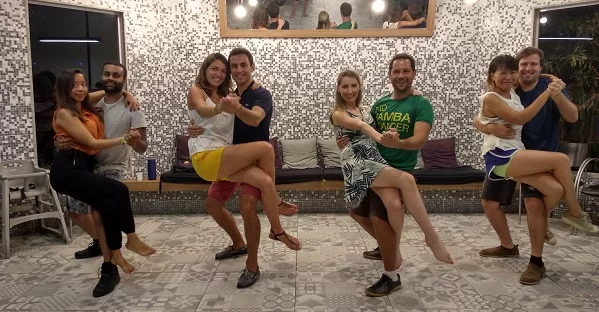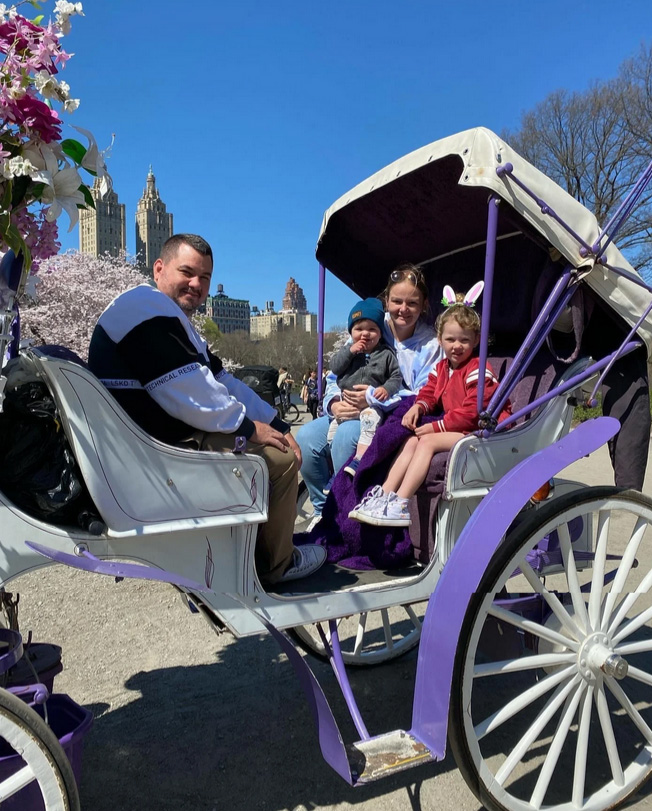Samba tours Rio de Janeiro, Brazil 2024: Our Samba School is ready to provide incredibles memories in Rio de Janeiro. Rio Samba Dancer it’s a Samba School in the heart of Copacabana, Rio de Janeiro. Offering a few different Samba Experiences for you, so you can enjoy it in a safe way when you travel to Rio de Janeiro. Founded in 2009 with the objective to decode the steps of Samba and show that all can dance, our Samba School is ready to show a carioca`s culture for you. Even if you are not a big fan of dancing you really can enjoy our samba experiences. Discover even more details at Samba experiences in Rio de Janeiro.
Boosts Heart & Mental Health – Samba is an aerobic exercise. This means that it promotes cardiovascular health as it is a great way to get your blood flowing and oxygenate your body. At the same time, it gives you a feeling of well-being, helping you improve your mental health. Improves Muscle Strength – All that dancing pays off. Dancing samba puts many muscles to work, which over time, leads to increased muscle strength. Stronger muscles help your body look more toned and defined. Are you ready to Samba? The more you dance, the more benefits you’ll see.
Passistas – Carnival’s leading samba dancers – They are usually on the sound truck behind the percussionists or find their way marching along with the school down the runway. One of the most important elements in the samba school parade is the rhythm and the lyrics of the theme song. The song must energize the dancers and the audience generating an intense desire to dance. The song must be related to the chosen theme and this theme should also be represented in the costumes, floats, and wings. This wing is dedicated exclusively to those women who have toiled for many years preparing their samba school for Carnival after Carnival. It is a way for the younger generations to show their appreciation for all the love and support these wonderful ladies have given to their samba school.
A busy day on Copacabana Beach – This 2.5-mile stretch of golden sand is synonymous with Rio de Janeiro. Packed with people on warm summer weekends and throughout the Christmas holidays, it’s a lively and fun scene and the beach where people from all walks of life come for sun, surf, and fun. The beach is wide, so be prepared for a significant walk to the water’s edge. The water is refreshingly cool and the waves can be surprisingly large depending on the day. Rio does a good job of keeping people on the beach safe, don’t be surprised if you see a red helicopter doing water rescues if the surf is up. Chairs and umbrellas can be rented for a reasonable fee from organized beach service operators, who also provide cold drinks and meals. They also provide free showers.
On the hill just above the harbor are the church and monastery of São Bento, one of the finest Benedictine complexes in Brazil. The original 1617 church was without aisles until it was enlarged in the second half of the 17th century by the addition of eight side chapels. The finest artists of the Benedictine order were involved in decorating the interior. The exuberant carving that covers the walls and ceiling was mainly the work of a monk named Domingos da Conceição, who was also responsible for the figures of St. Benedict and St. Scholastica on the high altar. The choir chapel has silver work by Mestre Valentim and 14 paintings by Ricardo do Pilar, a monk who was the foremost Benedictine painter of colonial Brazil. His masterpiece, Senhor dos Martírios (Christ of the Passion), is in the sacristy of the monastery.
Choreography at its best! Each samba school presents a theme which is portrayed by a team of musicians, samba dancers, and well-decorated floats. Months of preparation are put in by the samba schools who mobilize the support of thousands of locals from their communities. At the forefront of the preparations is the Carnvalesco or Carnival Director who sets the theme and organizes practically everything required for the parade right from the costume designs, decorations, theme song, and much more. For the samba parade, each school is divided into sections called ‘alas’ or wings, with each wing consisting of 100 members or more wearing the same costume. In some samba schools, each wing will choreograph their own dance that they practice for months prior to the Carnival. While the dance does contribute to the overall score, the dancers must be upbeat, and happy and sing their samba school song throughout the parade.
How To Get Ready For the tour? It is important to have positive energy and be ready to have fun! Be sure to arrive on time for the class so that we can start on time and not waste any of your precious time! We recommend wearing comfortable clothing and no jewelry. Bring a picture of your ID. Bring positive energy with you and be ready for a great samba evening! What’s the Best Time For A Night Tour? The best time for a Samba night tour is as soon as you get to Rio. Our tour guide can recommend lots of things for you in terms to enjoy your time. Book now! Find extra info on https://www.riosambadancer.com/.


